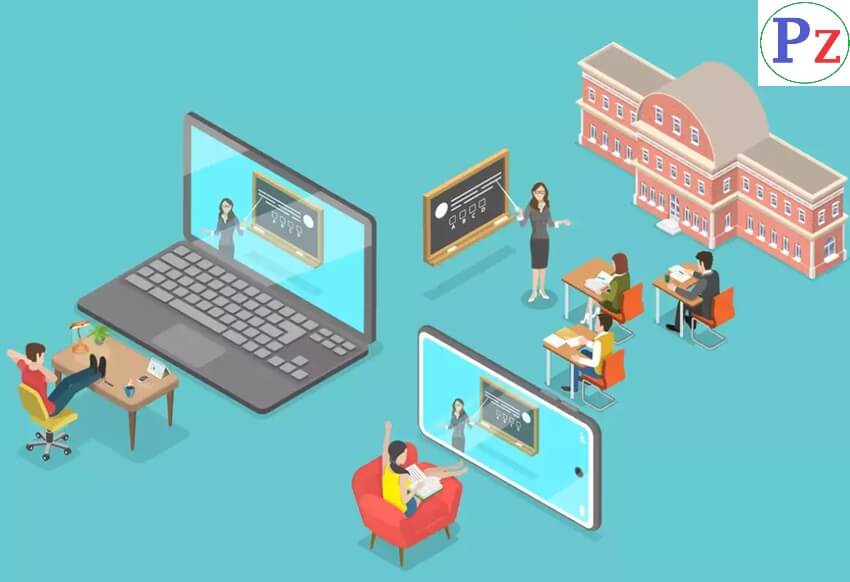Challenges of Implementing Hybrid Education
One significant challenge faced in implementing Hybrid Education is the need for effective communication and coordination between instructors and students. With the combination of online and in-person components, ensuring that all participants are on the same page can be a daunting task. Miscommunications and misunderstandings may arise if clear guidelines and expectations are not clearly established at the outset of the course, leading to confusion and frustration among both educators and learners.

Another obstacle in the implementation of Hybrid Education is the potential variation in technological proficiency among students. While some individuals may be well-versed in using digital tools for learning, others may struggle with navigating online platforms and engaging with virtual coursework. As Hybrid Education heavily relies on technology for its delivery, bridging this digital divide and ensuring that all students have the necessary skills to succeed in a hybrid learning environment is crucial for fostering inclusive and equitable educational practices.
Strategies for Successful Hybrid Teaching
Hybrid teaching, which combines traditional classroom instruction with online learning components, requires a thoughtful approach to ensure students’ success. A key strategy for successful hybrid teaching is to establish clear communication channels. Utilizing online platforms such as discussion boards or messaging apps can help facilitate ongoing interactions between students and instructors. This continuous communication fosters a sense of community and keeps students engaged with the course material. Additionally, providing detailed guidelines and expectations for both in-person and online components of the course can help students navigate the hybrid learning environment more effectively.
Another effective strategy for successful hybrid teaching is to incorporate a variety of instructional methods. Integrating multimedia elements such as videos, podcasts, or interactive simulations can enhance the learning experience and cater to different learning styles. By offering a mix of synchronous and asynchronous activities, instructors can accommodate students’ varying schedules and preferences. Furthermore, encouraging collaboration through group projects or online discussions promotes peer-to-peer learning and can help cultivate a sense of camaraderie among students in the hybrid setting.
Role of Technology in Hybrid Education
Technology plays a pivotal role in the realm of hybrid education, serving as a bridge between physical and virtual learning environments. With the advancement of digital tools and platforms, educators can seamlessly integrate online resources, interactive multimedia, and communication tools into their teaching practices. These technological assets not only enhance the flexibility and accessibility of education but also create opportunities for personalized learning experiences tailored to individual student needs.
In the landscape of hybrid education, technology acts as a facilitator for collaboration and engagement among students and instructors. Through virtual discussion forums, video conferencing, and online group projects, learners can interact with their peers and educators regardless of physical proximity. This digital connectivity fosters a sense of community and encourages active participation, ultimately enriching the educational experience and nurturing a collaborative learning environment.
Impact of Hybrid Education on Student Engagement
Hybrid education has transformed the landscape of student engagement in academic settings. With the integration of online and traditional learning methods, students are provided with a more diverse and interactive learning experience. This blend of in-person and virtual interactions creates a dynamic environment that caters to various learning preferences and paces.
Furthermore, hybrid education encourages active participation and collaboration among students. Through online discussions, group projects, and multimedia resources, students have ample opportunities to engage with course content, peers, and instructors. This heightened level of interactivity fosters a sense of community within the learning environment, leading to increased motivation and commitment among students towards their academic pursuits.
Hybrid Education Models in Different Institutions
Institutions across the educational landscape have been adopting various models of hybrid education to cater to the diverse needs of students and faculty. These models range from the flipped classroom approach, where traditional teaching methods are combined with online resources, to the station rotation model, which involves students rotating between different learning stations within a physical classroom. The flex model allows for a more personalized learning experience, where students have the freedom to choose when and where they engage with online content, while the online lab model focuses on practical, hands-on learning experiences in virtual environments.
Each institution tailors its hybrid education model to its unique goals and student demographics, resulting in a rich tapestry of approaches that blend traditional and digital learning. Some institutions prioritize synchronous online sessions to mimic the in-person classroom experience, while others focus on asynchronous activities that provide flexibility for students to engage with course material at their own pace. By exploring and adapting various hybrid education models, institutions aim to create dynamic learning environments that promote student success and engagement in an increasingly digital world.
Future Trends in Hybrid Education
The future of hybrid education seems to be moving towards a more personalized learning experience for students. With advancements in technology, educators are able to tailor educational content to suit the individual needs and preferences of each student. This trend is expected to lead to increased student engagement and motivation, as they have more control over their learning journey.
Another emerging trend in hybrid education is the integration of artificial intelligence (AI) and machine learning algorithms. These technologies have the potential to analyze student data in real-time, providing valuable insights to both educators and learners. By leveraging AI, educators can identify areas where students may be struggling and provide timely interventions to support their academic progress.
Case Studies of Successful Hybrid Education Implementation
One institution that successfully implemented hybrid education is XYZ University. By integrating online modules with in-person classes, they were able to create a dynamic learning environment that catered to students’ different learning styles. This approach not only increased student engagement but also improved overall academic performance across various courses. Additionally, the use of technology allowed for greater flexibility in accessing course materials, which benefited both students and educators.
Another example of effective hybrid education can be seen at ABC College. Through a combination of virtual lectures and interactive group projects, they were able to create a collaborative learning experience that fostered critical thinking and problem-solving skills. The use of online discussion forums also enhanced student interaction outside of class hours, leading to a stronger sense of community among learners. Overall, the successful implementation of hybrid education at ABC College resulted in improved student retention rates and higher levels of academic achievement.
Recommendations for Educators Embracing Hybrid Pedagogy
Hybrid education offers a unique opportunity for educators to enhance the learning experience through a blend of online and in-person instruction. As educators embrace hybrid pedagogy, it is crucial to prioritize clear communication with students to ensure that they understand the expectations and requirements of the course. Establishing a structured framework for both online and face-to-face components can help students navigate the course more effectively and stay engaged.
In addition, educators should leverage technology to create interactive and engaging learning experiences for students in hybrid environments. Utilizing online platforms for discussions, assignments, and collaborative projects can foster a sense of community among students and facilitate active participation. Providing timely feedback and support through online channels can also help students stay on track and feel connected to the course material.
| Read More Topics |
| What is the US education format |
| What does the department of education do in the US |
| What are the statistics on the education of girls in Nigeria? |





